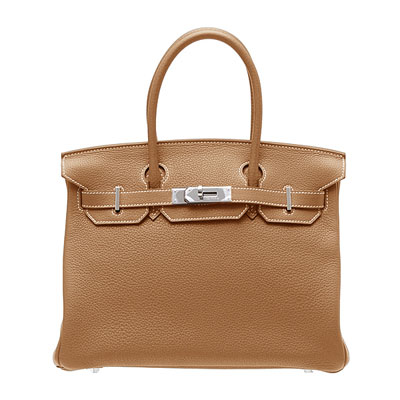The logic of luxury in emerging markets is a growth story that needs attention and documentation. What intrigues me is how come consumers from Brazil, Russia, India, and China (BRIC) today account for approximately 18-22 per cent of the world’s luxury market? The luxury market is growing at 20-30 per cent in these countries and it is estimated that BRIC will contribute approximately 36 per cent of the global luxury market by 2015 and is predicted to have the largest base of luxury consumers.
The recent financial crises of 2008 revealed that luxury industry is not immune to crisis. The crises originated in the financial industry in the US, Western Europe, and Japan and they have been the most affected by the crises. Also as we all know, France is the originator of most of the luxury brands followed by Italy. However, their most important market after the continent of Europe was Japan which has been hit substantially by the crisis. The country that is actually bearing the burden of the crisis or is turning around the crisis for luxury goods is China. Russia has wealth, knowledge and experience in luxury; it sees potential for luxury products consumption in two of its cities, Moscow and St. Petersberg. For China, it is an entirely different story; it is the growth engine of today’s luxury industry, the growth being exponential in the last 6-7 years. Although we have always seen China and India as the dragon and the elephant, Chinese luxury consumers want outwardly visible and status-driven products. Chinese consumers are exhibiting a symptom called “Release phenomena” – a situation where in a long term boundary or restriction has been removed and thereby the exuberance and urgent need to experience and own all the good things in life. It is a market which is largely driven by the Logo strategy.
Indian luxury consumers on the other hand are value conscious and are constantly on the look-out for stylish and aesthetic products and services which are complementary in nature. Craftsmanship and values are important to relate to an Indian consumer and thereby, create long term relationships. Thus entry and business development in India is challenging for most luxury brands. Only Louis Vuitton can boast of having profit in the luxury space in the Indian luxury industry. Consumer expectations are also very varied in the BRIC nations. The Chinese luxury consumers want mostly outwardly visible and status-driven products which in the luxury parlance is called the ‘logo strategy’. The bigger the logo the more the tendency to show off; more conspicuously demonstrate the products can be consumed. The Indian luxury consumers are different – they are more conscious and probably are probably searching to customize their needs. Thus what the Chinese consumers would want today is not what the Indian consumers would want today. Similarly, in Russia, the consumers expect luxury products to have a balance between tradition, modesty, and wealth. And interestingly, Russian consumers usually have been seen to buy goods that have much higher prices than they are ordinarily sold at because they like to show off that they can spend that amount of money for a valuable product. Thus concluding, consumers in these countries have become more and more aware and conscious of not only quality but also status.
Brazil, a country that is very rich having ample natural resources including precious stones, has another story to tell. It has more than 180 million consumers and very strong financial management, which has played a part in keeping the foreign investment from leaving the country. The luxury industry in Brazil is bolstered by the presence of ample natural resources, including precious stones like emeralds and tourmaline, which enable businesses like H.Stern to be fully integrated from mines to retail. The fashion industry in Brazil is particularly dynamic and can produce everything internally, but until now it has been focused on the domestic market. However, given the local know-how for building brands, we may see the emergence of more Brazilian brands building international businesses. There are a billion of customers here and the potential for these customers for the luxury goods is a huge landscape where there are challenges, strengths, and weaknesses.
The first key challenge in these markets is education and knowledge about the luxury industry. Our experience has shown that education has made a difference in the luxury industry and those who know the product would like to compare, contrast, see and experience what they like before they buy. It is indeed important for the luxury industry to understand the demand and the market as there is no global strategy for the industry in general. The second challenge is the size and population of these countries. BRIC countries are the most populated in the world. If we take these four countries together, it is close to more than 3 billion people, which is half the world’s population. These countries have some brands which have been very successful in the past, though they have not been known globally like the French or the Italian brands. It may not however be true that consumers from these countries would only like brands which are from the developed nations of the world, e.g., France and Italy. The third challenge is distribution- in countries like France and Italy, one might have witnessed 3-4 high-streets, where most of the luxury shops are located. For instance, Place Vend me, Avenue Montaigne, rue Cambone in Paris, which are known as centers of luxury shopping but in countries like China, India, Brazil and Russia, still not many exclusive luxury destinations can be found.
To come back to our key question of logic of luxury in emerging markets, it has no easy solution. Hermes launched Shang Xia, a local luxury brand in China – a brand that would be made in China, for China, and sold in China. With its first boutique in Shanghai, it is the first time in its history that Hermes has created a separate brand and it is the first time in its history that it will incur revenues from products made in China. Exclusivity, limited production and high quality manufacturing in France have been part of its DNA since the brand was set up. Unlike Louis Vuitton or Gucci, Hermes has had, strategically, a much slower rhythm of expansion in order to preserve exclusivity and maintain its position of a true luxury brand. Chanel on the other hand has launched specific collections with the Chinese consumer in mind. The latest look is a long, slim dress in a rich, opulent fabric, slit to the thigh on each side to give a glimpse of a contrast lining. That this style borrows from the traditional Chinese cheongsam is probably not a coincidence. In a sense, we see some companies follow entirely diverse strategies in the same emerging market. One brand made a product for a particular market thus clearly distancing its original product from the local market while another brand adapted its product to the local market without distancing its brand DNA. Lastly, India is a market for tomorrow and hence what should be the strategies companies need to imbibe and follow in order to succeed in this market the path will not be easy for luxury brands
Some key ideas to ponder upon might be:
- The sheer size of emerging markets needs a rethink, not only the geographical spread but also the size of the population. This means from a marketing and sales perspective “there are lot of needles (millionaires) and a lot of hay (geographical spread)”. To be successful in these markets one needs to know and learn “to search for needles in a haystack”. Most emerging market consumers believe in investing and not in consumption and thus the dynamics of marketing are entirely different than that perceived from developed nations such as France or Italy. Be ready with deep pockets and at least an investment cycle of 3-7 years. And be ready to face bureaucracy and compliance.
- Logic of luxury in emerging markets is different. It cannot be generalized. Each emerging market requires a dedicated approach. Be ready to spend time in educating your consumers.
- The core principle of luxury is about telling stories. Story telling might be the best way to popularize a niche brand. The end consumer picks up a few points and of course has something to talk about to his friends
- Chinese consumers are brand conscious while the Indian consumers are extremely value-conscious, not necessarily price-conscious. After the Japanese consumers, the Chinese, the Russian and the Indian consumers will probably be the growth engines of the luxury industry and that is why Luxury needs a rethink in emerging markets






